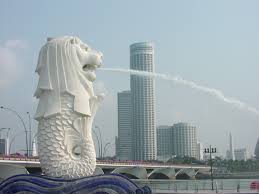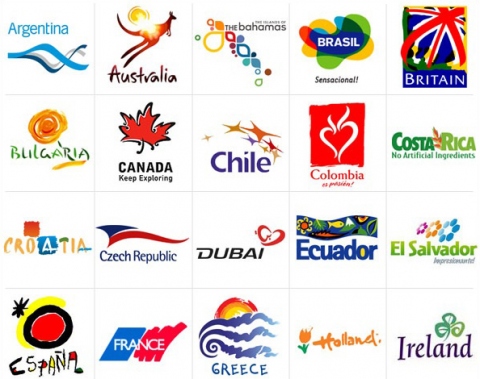Nation Branding
In its 2005 “Year of Ideas” issue, The New York Times Magazinelisted nation branding among the year’s most notable ideas. The way a country is perceived can make a significant difference to the success of its trade, business, tourism efforts, as well as its diplomatic and cultural relations with other nations. Simon Anholt coined the term ‘nation branding’ in 1996 and since then he has been working with governments to help them plan the policies, strategies, investments and advance which lead their country towards an improved profile and reputation. America has become the largest and most powerful brand in the globe; it virtually shapes the world in almost all dimensions such as national governance, policies, exports, people, tourism, economic and social status etc. In the fast growing global village nation’s branding is considered as big as federal mega-projects. Steve Silver and Sam Hill, both marketing experts define nation branding as most complex (brand) positioning problem; how can we brand a nation? A nation is as big as a Meta brand inclusive of numerous mega brands. There are so many mega activities of in a nation such as political governance, commerce, education, human resource development, environment, foreign affairs, infrastructure, environment, tourism, culture and heritage etc.
Few years back marketing Guru Philip Kotler launched the World Marketing Summit (WMS), an annual gathering of professionals, in Dhaka to find solutions to global challenges such as climate change, healthcare and skill development. The purpose of the summit was building strategies for creating a better world. When somebody asked a question to Philip Kotler how emerging economies like India and China should build brands? He answered the question plausibly stating that emerging countries need to understand importance of marketing strategies. Imagine importance of marketing for building brands as big as nations.
In the emerging economies like China, India, Russia and Brazil many businesses are in the first stages of life cycles, most of these are product driven companies. In India lot of companies are just focused on market share, instant profits, and very little focus on marketing values. In some developing countries marketers have now recognized the importance of lasting impact of branding exercise, reputation and importance of being customer-driven.
Mr. Kotler’s advice to the business world is to become a brand that has distinct meaning. He says it is not enough for companies to be known for what they are producing or manufacturing; for instance it is not enough for people to know that Nike makes athletic shoes. Nike means much more…… It’s a lot of work!
Nation Branding: Role of Government
Coming back to nation branding; the role of governments is to appreciate the best companies around and to assist them in becoming more excellent in the country, and then in the region and then in the world. The government should make it easier for companies to be export-driven, to put in quality control policies, to raise adequate funds as and when required. The government needs to have business friendly approach.
Any nation in the world cannot take its position for granted. The economic scenario changes swiftly. According to leading economists in the world, there are approximately 28 emerging economies which are marching ahead. Countries like Brazil, China and India are regarded as the largest in the world today though the G8 has not included them. There are countries like Greece and Italy who are losing their foothold from the stable nations in the world. Greece is already in major breach of euro zone rules on deficit management and with the financial markets betting the country will default on its debts, this reflects badly on the credibility of the euro. There are also fears that financial doubts will infect other nations at the low end of Europe’s economic scale, with Portugal and the Republic of Ireland coming under scrutiny. If Europe needs to resort to rescue packages involving bodies such as the International Monetary Fund, this would further damage the euro’s reputation and could lead to a substantial fall against other key currencies.
The concept of branding is viewed as ‘cultural diplomacy’ of nations. It is a somewhat new way of looking at a nation, but every nation is already a brand. Every nation is perceived in the minds of people differently living elsewhere in the world. Some countries are known for good things, some for bad, and others have mixed perceptions. Based on these perceptions, other nations in the world interact and do business with other nations, either contributing to its development or hindering it. For example Africa is associated with civil war, Iraq with suicide bombings and Cuba with Fidel Castro’s dictatorship. On the other hand countries such as the US, Canada or France, are perceived positively for decades for their sound political and economic development. Nation branding is based on the underlying assumption that every nation is a brand good or bad depending on its efforts. The important thing to realize about branding a nation is that one of its ingredients is the intensification of something that is found already within that nation.
Singapore – Rise from third world to first world
 Singapore’s stunning rise from third world to first world in a matter of 30 years was spearheaded by an intensive and rigorous closely-coordinated programme of nation branding. Today, brand Singapore attracts the investments, business, trade, tourism and talented human resources from all over the world which is helping it further to become more flourishing nation. This state is internationally known as a vibrant, safe, corruption-free place to do business. Name any of the great businesses of the world; everybody wants to be in Singapore! The vibrancy and liveliness of the nation in its culture and the fine art attracts more and more tourists. In global surveys of quality of life, Singapore regularly tops the charts.
Singapore’s stunning rise from third world to first world in a matter of 30 years was spearheaded by an intensive and rigorous closely-coordinated programme of nation branding. Today, brand Singapore attracts the investments, business, trade, tourism and talented human resources from all over the world which is helping it further to become more flourishing nation. This state is internationally known as a vibrant, safe, corruption-free place to do business. Name any of the great businesses of the world; everybody wants to be in Singapore! The vibrancy and liveliness of the nation in its culture and the fine art attracts more and more tourists. In global surveys of quality of life, Singapore regularly tops the charts.
Singapore’s exit from Malaysia was a unique historical situation. It is hard to think of another example in history when a state was expelled from a larger country. Singapore’s problems for its fight of independence were not distinctively glamorized. High levels of unemployment, lack of sanitation, scarcity of potable water, and ethnic conflict were some conditions that marred Singapore then and still typify many third world countries today. It was common scene then on the streets of the country Chinese and Malays often fought street battles that ended in bloodshed.
The unusual effectiveness of the Singapore government has won worldwide acclaim over the years. The Institute of Management Development’s World Competitiveness Yearbook 1997, ranked Singapore as the country which has adopted most effective and fastest strategies and implementations in government policy. Berlin based Transparency International placed Singapore in fourth place worldwide in 2003 for absence of corruption. To explain Singapore’s economic success, it is important to understand the predominant themes that have distinguished its governance from less successful third world countries. At the heart of the Singapore model is the social contract that was articulated between the ruling PAP (People’s Action Party) run government and the people of Singapore. In essence, it said that while the people were willing to accept more government control they also gave up some individual rights. People worked hard while the government created the environment which delivered prosperity and a better quality of life.
The World Bank ranks nations on various parameters on the basis of ease of doing business, from 1 to 183. A high ranking on the ease of doing business index means the regulatory environment is more conducive to the starting and operation of a local firm. This index shows the best countries the world which allows businesses to prosper. As of today, Canada ranks number one in this list.
Environmental scanning of a nation for brand building
Environmental scanning of a nation helps in the brand building exercise of a nation. It is the study and interpretation of the political, economic, social and technological events and trends which influences businesses to establish in a nation. The following parameters involve in environmental scanning:
Economic Environment
It is very complex and dynamic in nature that keeps on changing with the change in policies or political situations. It consists of three elements: (i) Economic Conditions of Public (ii) Economic Policies of the country (iii) Economic System and other Economic Factors such as infrastructural facilities, banking, Insurance companies, money markets, capital markets etc.
Political environment
The government policies affect the businesses extensively. Political beliefs of Government, political strength of the country, relation with other countries, defense and military policies, centre state relationship in the country, thinking of opposition parties towards business Units attract or distract FDI in a country.
Socio-cultural environment
Influence exercised by social and cultural factors, not within the control of business, is known as Socio-Cultural Environment. These factors include: attitude of people to work, family system, caste system, religion, education, marriage etc.
Technological environment
A systematic application of scientific knowledge to practical task is known as technology. Everyday there has been vast changes in products, services, lifestyles and living conditions, these changes must be analyzed by every business unit and should adapt these changes.
Natural environment
It includes natural resources, weather, climatic conditions, port facilities, topographical factors such as soil, sea, rivers, rainfall etc. Every business unit must look for these factors before choosing the location for their business.
Demographic environment
It is a study of perspective of population i.e. its size, standard of living, growth rate, age-sex composition, family size, income level (upper level, middle level and lower level), education level etc. Every business unit must see these features of population and recognize their various needs and produce accordingly.
We Indians should take some lessons to brand ourselves in the globe.














































